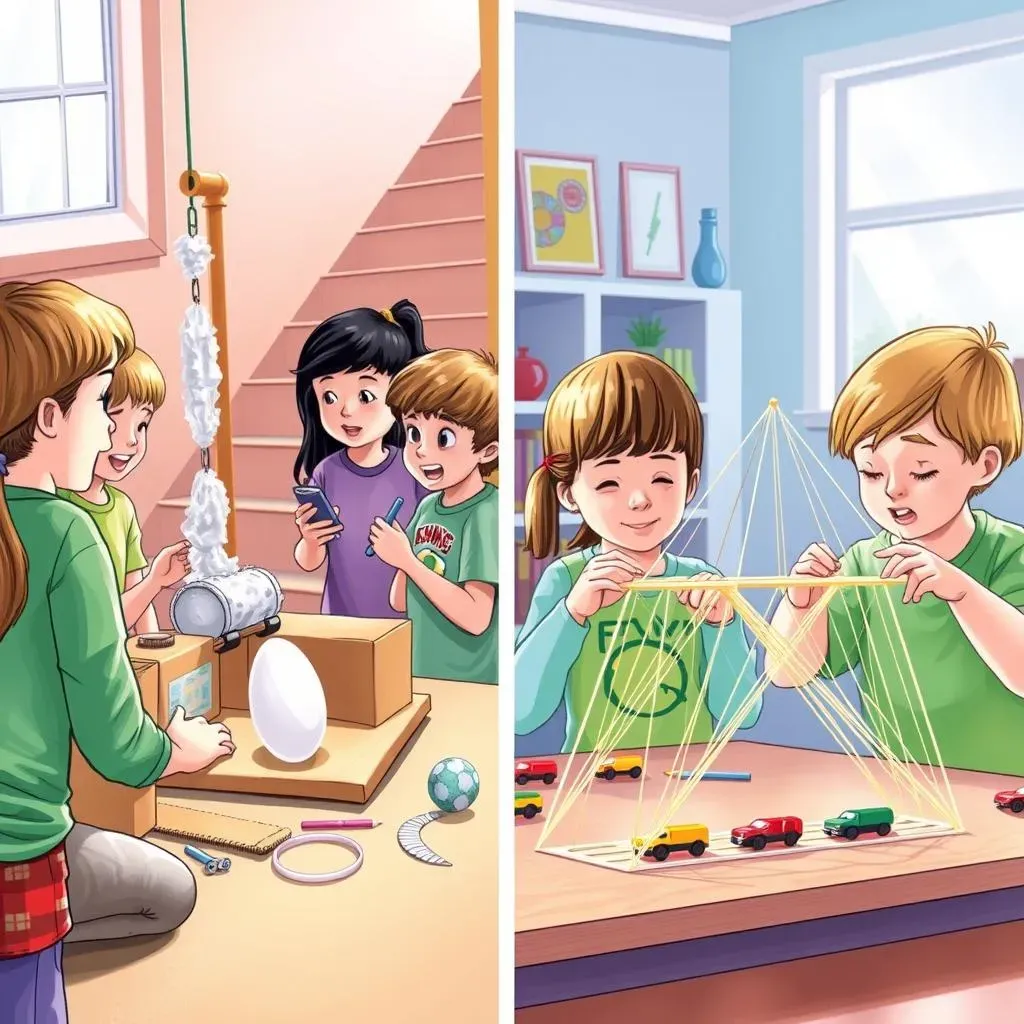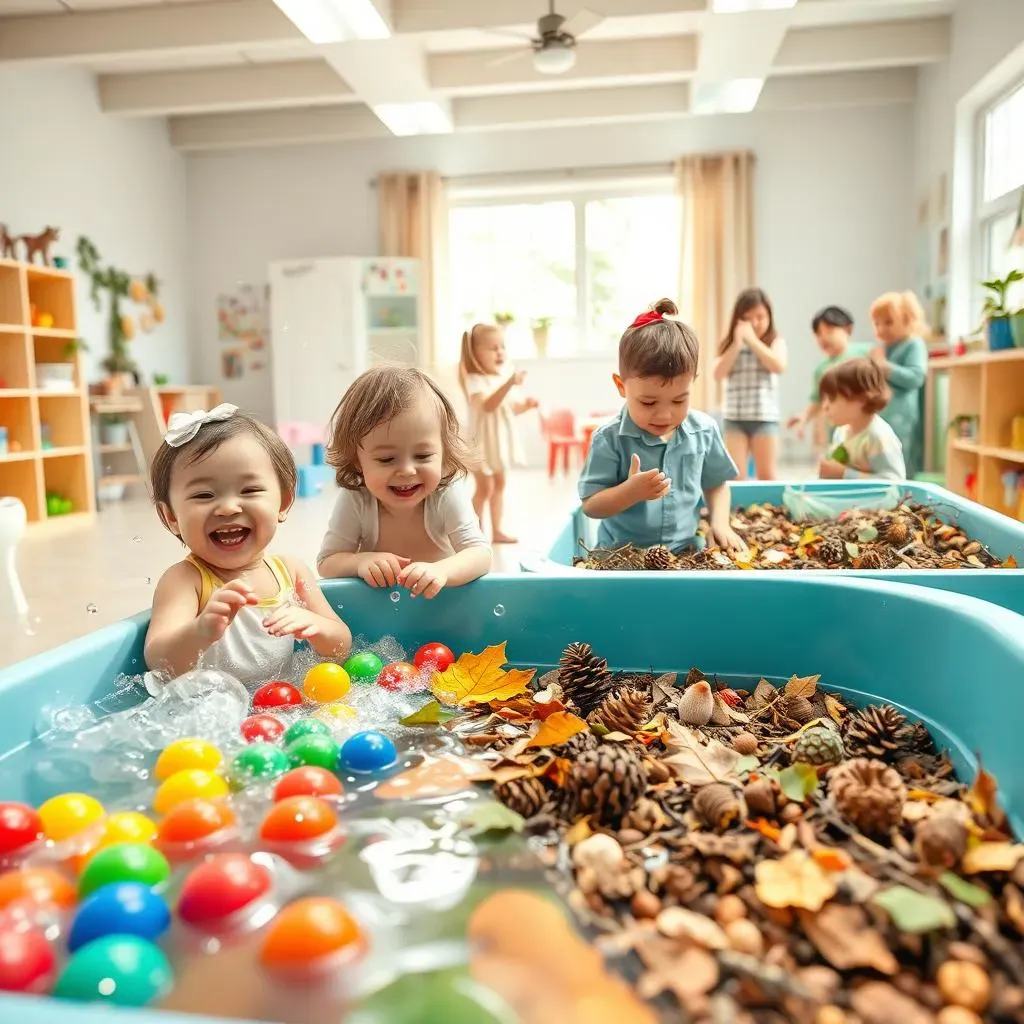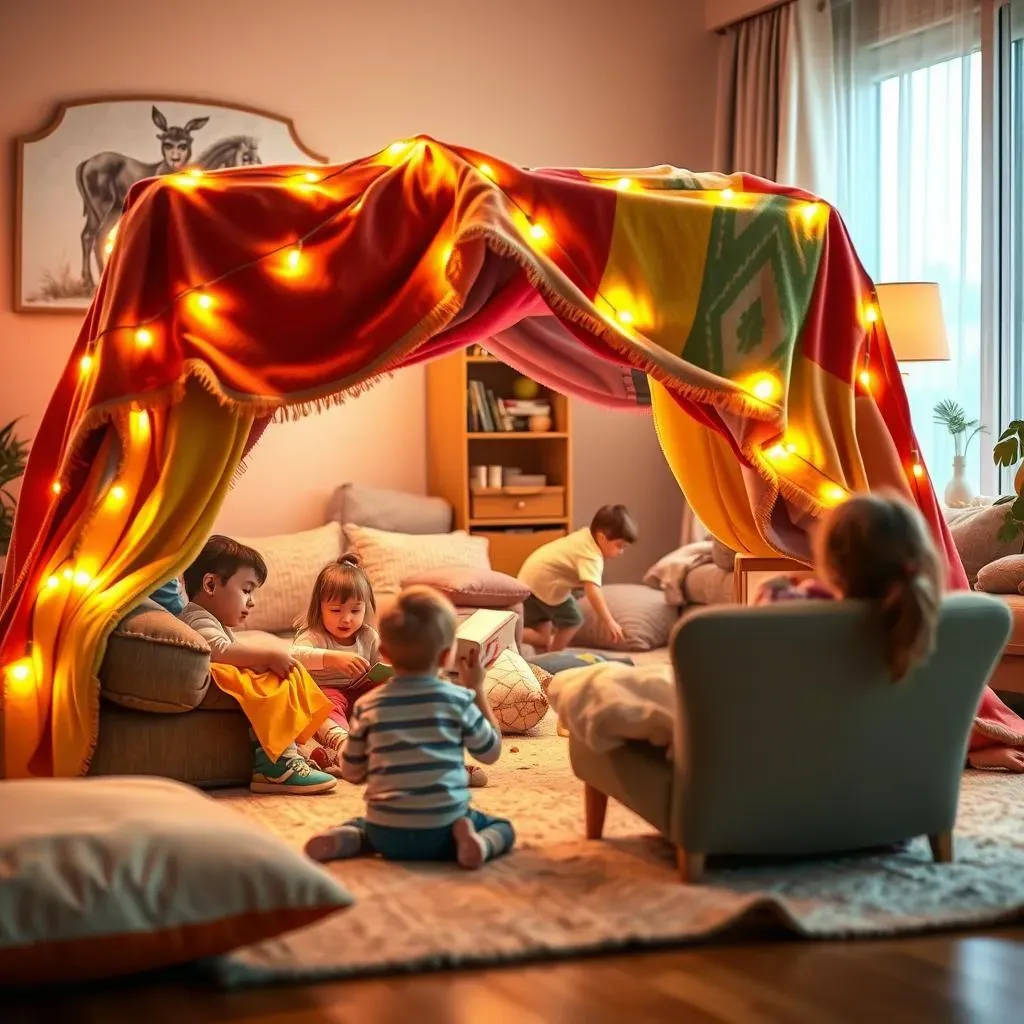Table of Contents
Rainy days or winter blues got your kids cooped up? Fear not! Unleash a world of fun and learning with exciting indoor play examples that transform your home into a playground of imagination. Forget the screens and say hello to creativity, exploration, and laughter. This isn't just about filling time; it's about sparking curiosity, developing essential skills, and creating lasting memories.
Arts and Crafts: Igniting Creativity with Indoor Play

Arts and Crafts: Igniting Creativity with Indoor Play
so you're diving into arts and crafts for indoor play? Awesome! This is where the magic happens. Forget about expensive toys; we're talking about unleashing a kid's imagination with simple supplies. Think about it: a stack of paper, some crayons, and suddenly, you've got a world of possibilities. We're not aiming for perfection here. It's all about the process, the exploration, and the sheer joy of creating something unique. Let's get those creative juices flowing!
One of my favorite go-to ideas is mask-making. Grab some paper plates, scissors, and a bunch of colorful odds and ends – think feathers, glitter, yarn, buttons, whatever you've got lying around. Let the kids design their own superhero masks, animal masks, or even silly monster masks. It's a fantastic way to encourage imaginative play and storytelling. Another winner? DIY stuffed animals. Use old socks, fabric scraps, and stuffing (cotton balls work in a pinch!) to create cuddly companions. Kids can personalize them with markers, buttons for eyes, and yarn for hair. Trust me, they'll treasure these homemade creations way more than anything store-bought.
Don't underestimate the power of simple bookmaking. Fold some paper in half, staple it together, and voila – a blank canvas for stories, drawings, and poems. Kids can create their own comic books, fairy tales, or even how-to guides. It's a great way to boost literacy skills while fostering creativity. And hey, if you're feeling adventurous, try making natural watercolors. Boil down some fruits and vegetables like blueberries, beets, and spinach, and use the colored water as paint. It's a fun way to learn about colors and where they come from, plus it's totally safe for little ones. Remember, the goal is to have fun and explore, so don't be afraid to get messy!
STEM Adventures: Learning Through Indoor Play Examples

STEM Adventures: Learning Through Indoor Play Examples
Egg Drop Experiment: Engineering Challenge
Alright, let's talk STEM! Forget textbooks; we're making science fun with indoor play examples that'll have your kids thinking like little engineers. First up, the egg drop experiment. This classic challenge is all about protecting a raw egg from a high fall. Gather materials like cardboard, bubble wrap, straws, tape, and anything else you can find. The goal? Design a contraption that will keep the egg safe when dropped from a height – think a staircase or even a second-story window (with supervision, of course!).
The beauty of this activity is that it encourages problem-solving, critical thinking, and creativity. Kids have to consider factors like impact force, cushioning, and structural integrity. It's a fantastic way to introduce basic physics concepts in a hands-on way. Plus, the suspense of the drop is super exciting! Just be prepared for a potential mess – have some paper towels handy!
Here is a list of materials for Egg Drop Experiment:
- Raw eggs
- Cardboard
- Bubble wrap
- Straws
- Tape
- Scissors
Toothpick Bridge Building: Structural Integrity
Next on our list of indoor play examples for STEM is toothpick bridge building. All you need are toothpicks and some gummy candies (or marshmallows). Challenge your kids to build a bridge that can hold weight. This activity introduces basic engineering principles like load distribution and structural stability. Kids will learn about triangles, arches, and other shapes that make bridges strong.
Start by having them sketch out a design. Encourage them to experiment with different shapes and bracing techniques. The real fun begins when they start testing the bridge's strength. How many books can it hold before collapsing? This is a great way to teach kids about trial and error, and the importance of learning from mistakes. Plus, who doesn't love playing with gummy candies? It is a win-win!
Activity | Skills Developed | Materials Needed |
|---|---|---|
Egg Drop Experiment | Problem-solving, critical thinking, engineering | Eggs, cardboard, bubble wrap, tape |
Toothpick Bridge Building | Structural engineering, design, stability | Toothpicks, gummy candies |
Sensory Exploration: Engaging Senses with Indoor Activities

Sensory Exploration: Engaging Senses with Indoor Activities
Water Play: More Than Just a Bath
let's dive into sensory play! Forget the idea that it's just for toddlers; sensory activities are fantastic for kids of all ages. And guess what? You don't need fancy equipment. Water play is a classic for a reason. Fill a bin with water and add some toys, measuring cups, and spoons. Let your kids splash, pour, and explore the properties of water. You can even add some bubbles or food coloring for extra fun. It’s a simple way to engage their senses of touch, sight, and sound.
To elevate the experience, consider themed water play. For instance, a "car wash" with toy cars, soap, and sponges teaches responsibility and fine motor skills. Or a "potion lab" with droppers, beakers (plastic, of course!), and colored water encourages creativity and early science exploration. Just remember to keep it safe and supervise younger children closely.
Nature Sensory Bins: Bringing the Outdoors In
Bring the outdoors inside with nature sensory bins! Collect natural materials like leaves, twigs, rocks, pinecones, and soil. Place them in a bin and let your kids explore the textures, smells, and sights of nature. This is a great way to connect with the environment, even when you're stuck indoors. You can add small toys like plastic animals or insects to encourage imaginative play. To prevent the spread of any unwanted critters, make sure to properly clean any natural materials that you bring inside.
Take it a step further by creating different themed nature bins. A "beach" bin with sand, seashells, and water is perfect for summer. A "forest" bin with leaves, twigs, and pinecones is great for fall. Get creative and adapt the bin to the season or your child's interests. Nature sensory bins are not only fun, but they also offer a calming and grounding experience for kids.
Scavenger Hunts: Engaging All Senses
Let's get those little bodies moving with an indoor scavenger hunt that targets all the senses! Instead of just finding objects, challenge your kids to find things that meet specific sensory criteria. For example, "Find something that smells like cinnamon," or "Find something that feels soft," or "Find something that makes a loud noise." This activity encourages kids to pay attention to their surroundings and engage with the world in a new way.
You can make the scavenger hunt more challenging by adding riddles or clues. Or, turn it into a collaborative activity by having kids work together as a team. Not only is it a fun way to burn off energy indoors, but it also sharpens their observation skills and enhances their sensory awareness. It's a win-win!
Activity | Sense Focus | Materials |
|---|---|---|
Water Play | Touch, Sight, Sound | Water, toys, containers |
Nature Sensory Bins | Touch, Sight, Smell | Natural materials, bin |
Sensory Scavenger Hunt | All senses | Household items, clues |
Transforming Spaces: Building Forts and Obstacle Courses for Indoor Fun

Transforming Spaces: Building Forts and Obstacle Courses for Indoor Fun
Alright, let's get physical! If you're looking for indoor play examples that burn energy and spark creativity, you've come to the right place. We're talking about transforming spaces into epic forts and thrilling obstacle courses. Forget the gym; we're turning your living room into an adventure zone! Building forts is a classic for a reason. It's all about creating a cozy, imaginative space where kids can escape and let their imaginations run wild. Grab some blankets, pillows, chairs, and anything else you can find. Drape the blankets over the chairs to create walls and a roof. Add some pillows and cushions for comfort. String up some fairy lights for ambiance. Suddenly, you've got a magical hideaway where kids can read, play, and dream.
Obstacle courses are another fantastic way to get kids moving indoors. Use furniture, pillows, blankets, and toys to create a challenging and fun course. Have them crawl under chairs, jump over pillows, and weave through cones (or water bottles). Time them to add an element of competition. Get creative with the obstacles to make it even more fun. You can even incorporate learning activities into the course. For example, have them solve a math problem before moving on to the next obstacle. Not only will they be burning energy, but they'll also be sharpening their minds. Remember, the goal is to have fun and be active, so don't be afraid to get silly and let loose!
To take your fort-building game to the next level, consider adding some themed elements. A "camping" fort with sleeping bags, flashlights, and nature books is perfect for a pretend outdoor adventure. A "castle" fort with cardboard boxes, construction paper, and glitter is great for imaginative medieval play. And for the obstacle course, create themed challenges. A "spy" course with crawling under "laser beams" (yarn), decoding messages, and sneaking past "guards" (stuffed animals) is super engaging.
Activity | Benefits | Materials |
|---|---|---|
Fort Building | Imagination, creativity, problem-solving | Blankets, pillows, chairs |
Obstacle Courses | Physical activity, coordination, problem-solving | Furniture, pillows, toys |
Cooking and Life Skills: Tasty Indoor Play Examples

Cooking and Life Skills: Tasty Indoor Play Examples
Easy Recipes for Little Chefs
Alright, let's get cooking! Teaching kids to cook is not just about making food; it's about instilling essential life skills, fostering independence, and creating lasting memories. And guess what? It can be a blast! Start with easy recipes that kids can handle, like no-bake energy balls, simple sandwiches, or homemade pizzas. The key is to involve them in every step of the process, from measuring ingredients to mixing and assembling. It is important to keep the recipes simple and age-appropriate. Young children can help with tasks like washing vegetables, stirring ingredients, and decorating dishes. Older children can handle more complex tasks like chopping vegetables (with supervision), measuring ingredients accurately, and following recipes independently.
I've found that kids are more likely to eat what they make, so this is a great way to introduce new foods and encourage healthy eating habits. Plus, it's a fantastic opportunity to teach them about nutrition and where their food comes from. For example, when making pizza, talk about the different food groups and the importance of eating a balanced diet. You can also visit a local farm or farmer's market to show them where fresh ingredients come from. Remember, cooking with kids is not about perfection; it's about having fun and learning together!
Snack Creations: Fun and Healthy
Let's move onto snack creations! Forget the pre-packaged stuff; we're making our own delicious and healthy snacks. Think fruit skewers with yogurt dip, veggie sticks with hummus, or homemade trail mix. Get creative with the ingredients and let your kids design their own snack masterpieces. This is a great way to sneak in some extra fruits and vegetables into their diet. For example, you can make a "rainbow" fruit skewer with strawberries, oranges, pineapple, kiwi, and blueberries. Or, create a "garden" veggie platter with carrots, celery, cucumbers, and bell peppers.
Snack creations are also a fantastic opportunity to teach kids about portion control and making healthy choices. Talk about the importance of eating a variety of foods and limiting sugary and processed snacks. You can also involve them in planning the snacks for the week and creating a shopping list. This will help them develop a sense of ownership and responsibility over their food choices. Remember, snack time should be fun and enjoyable, so don't be afraid to experiment with different flavors and textures!
Activity | Skills Learned | Benefits |
|---|---|---|
Easy Recipes | Cooking, measuring, following instructions | Healthy eating, independence, creativity |
Snack Creations | Healthy snacking, portion control, food choices | Nutrition, responsibility, creativity |
Conclusion: Embrace the Joy of Indoor Play
So, there you have it – a treasure trove of indoor play examples to banish boredom and unlock your child's potential. Remember, the best activities are the ones that spark joy, encourage exploration, and foster connection. Don't be afraid to get messy, think outside the box, and most importantly, have fun! By embracing the spirit of play, you're not just filling time; you're nurturing creativity, building skills, and creating cherished memories that will last a lifetime. Now go forth and transform those indoor days into unforgettable adventures!